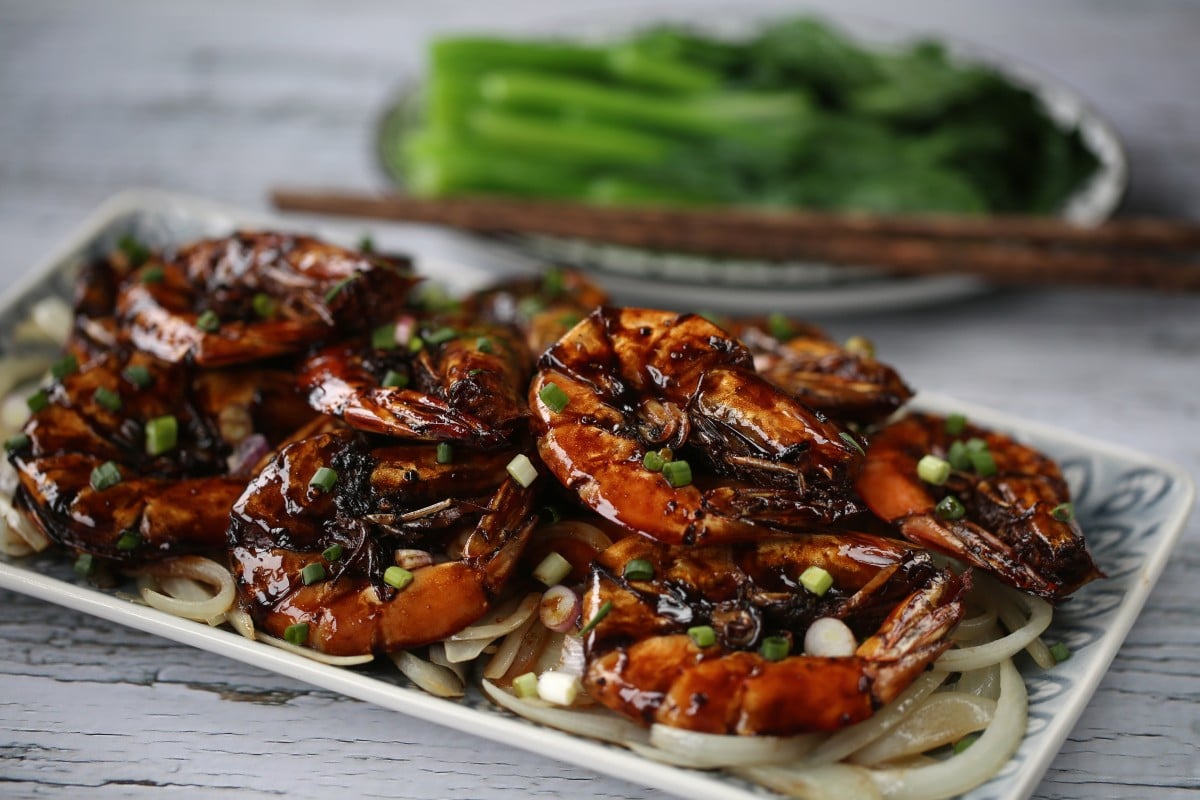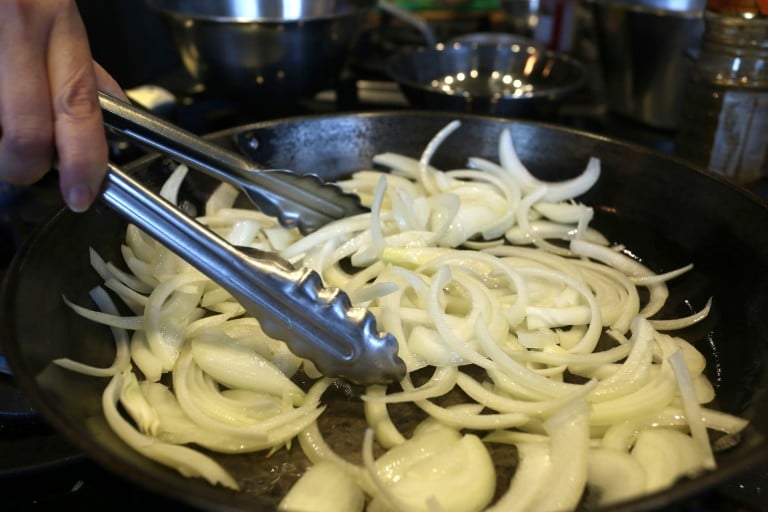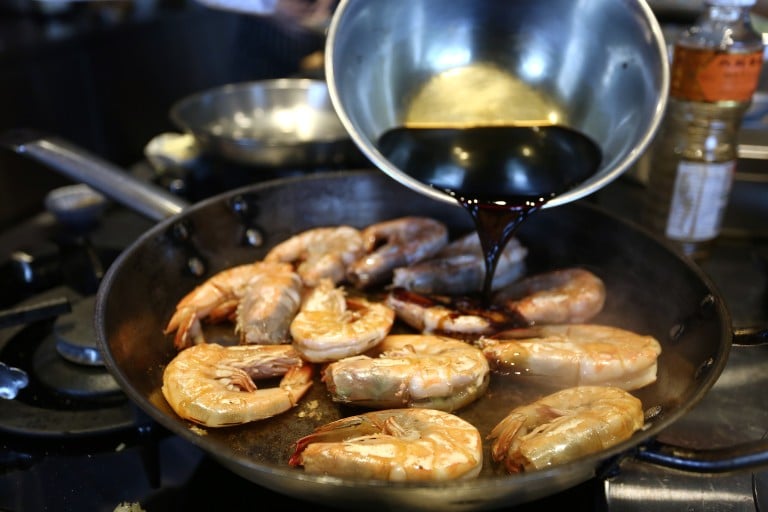
Soy sauce prawns is a fast and easy dish that appears on the menu of many Cantonese seafood restaurants. This version has an ingredient you wouldn’t expect in a Chinese dish: butter. It adds a gentle richness to the sauce and contributes to its attractive shine.
It is essential to use white onion in this recipe, not the more common brown-skinned onion. White onion is sweeter, especially when it is barely cooked, as it should be for this dish. The onion should be cooked just until it starts to wilt and is still a little crisp.
Use prawns with bodies (not including the head) at least 9cm (3½in) in length, or a little larger; if they are too small, they will overcook in the brief time it takes to sear and simmer them.
Chinese rock sugar comes as small, roughly shaped, pale golden lumps, which give a lovely glossy sheen to sauces. As they are hard, larger lumps take a while to dissolve, which is not a problem if you are cooking the rock sugar in a large amount of liquid, such as tong sui (sweet dessert soups). But as the two soy sauces provide the only liquid for this recipe, and will reduce too much if simmered for too long, the sugar lumps should be crushed so they will dissolve faster.
Instead of doing small amounts every time I need crushed sugar, I do a whole box (or bag) at a time. Put the sugar in a plastic bag, press out all the air and loosely seal it (if you don’t contain it somehow, the sugar will fly all over the place).
Place the bag on a heavy chopping board, cover it with a clean, dry kitchen cloth, then bash away with the flat side of a metal meat mallet (this is a good way of getting out your aggression).
The sugar will break into unevenly sized pieces; use the larger ones for tong sui and the smallest crumbs for quickly simmered dishes such as this one. If you can’t be bothered, though, use granulated white sugar.
Aged soy sauce, as its name suggests, is aged before bottling. It is not always labelled as “aged soy sauce”; the brand I buy, Yuan’s, calls their version "royal soy sauce". It is expensive but is only used in small quantities. If you can’t find it, use dark soy sauce, although the flavour won't be as good.
Once the ingredients are prepared, the onions and prawns take just a few minutes to cook.

Lay each prawn on a cutting board, then cut off and discard the sharp spike at the tip of the head and trim off the antennae. Cut through the shell down the back of the prawn (I use kitchen shears for this), making a shallow slit in the flesh, and pull out and discard the dark vein. Dry the prawns with a paper towel.
Halve the onion, then cut it into slices about 3mm (⅛in) thick. Mince the spring onion.

Heat a large skillet over a high flame and, once hot, coat it with 10ml (2 tsp) of cooking oil. Add the white onion and stir constantly for about a minute (or less), until it starts to wilt. Immediately remove the onion from the skillet and spread on a serving plate.
Put the light soy sauce and crushed sugar into a small saucepan over a medium flame and stir until the sugar is dissolved. Stir in the aged soy sauce, then turn off the flame and add the butter. Swirl the pan until the butter melts and combines with the other ingredients.
Over a high flame, heat the skillet used to cook the onion (no need to wash it). When the pan is hot, coat it with 10ml (2tsp) of cooking oil. One by one, arrange the prawns in the hot skillet, taking care to remember in which order you place them. As soon as the last prawn is in the skillet, start turning them over in the same order they were placed in the pan.

Once you have turned over the last prawn, pour the soy sauce-butter mixture into the skillet and bring to a boil. Turn the prawns over again, working in order from first to last. After turning over the last prawn, turn off the heat. The prawns should be lightly coated with the sauce, which will be thick and glossy. Sprinkle freshly ground black pepper over the prawns, then remove them from the skillet one at a time, starting with the first.
Arrange the prawns over the bed of onions on the serving plate. Drizzle with a little of the sauce from the skillet and sprinkle with the spring onion. Serve immediately accompanied with steamed rice and stir-fried vegetables.